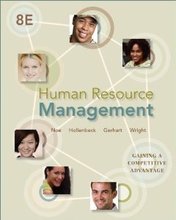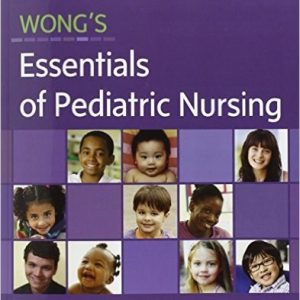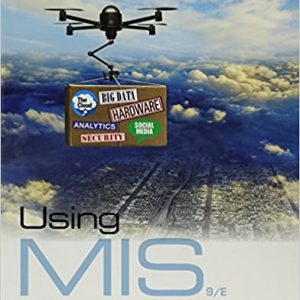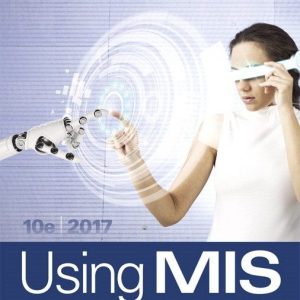Human Resource Management Noe 8th Edition Test Bank

People also search:
Human Resource Management
Human Resource Management Noe Hollenbeck Gerhart
Human Resource Management Noe Hollenbeck Gerhart 8th
Human Resource Management Noe Hollenbeck Gerhart 8th Test Bank
Human Resource Management Noe 8th Edition Test Bank
Description:
Chapter 02
Strategic Human Resource Management
True / False Questions
1. The goal of strategic management in an organization is to deploy and allocate resources in a way that provides the company with a competitive advantage.
True False
2. Strategic management is a process for analyzing a company’s competitive situation, developing the company’s strategic goals, and devising a plan of action and allocation of resources that will increase the likelihood of achieving those goals.
True False
3. Strategic planning groups decide on a strategic direction during the strategy implementation phase.
True False
4. Strategy implementation includes defining a company’s mission and goals.
True False
5. One-way linkage precludes the company from considering human resource issues while formulating the strategic plan.
True False
6. Untapped labor pools are an example of a strategic opportunity in an organization’s operating environment.
True False
7. Internal analysis attempts to identify the organization’s strategic opportunities and threats.
True False
8. Strategic choice describes the way an organization attempts to fulfill its mission and achieve its long-term goals.
True False
9. Job analysis addresses what tasks should be grouped into a particular job.
True False
10. Recruitment refers to the process by which an organization attempts to identify applicants with the necessary characteristics that will help the organization achieve its goals.
True False
11. Training refers to a planned effort to facilitate the learning of job-related knowledge, skills, and behavior by employees.
True False
12. Companies that are not diversified use quantitative measures of performance to evaluate managers.
True False
13. Executives who have extensive knowledge of the behaviors that lead to effective performance tend to focus on evaluating the objective performance results of their subordinate managers.
True False
14. By tying pay to performance, a company can elicit specific activities and levels of performance from employees.
True False
15. According to Michael Porter, competitive advantage stems from a company’s ability to create value in its production process.
True False
16. An overall cost leadership strategy is achieved by offering unique product features.
True False
17. Companies engaged in a cost strategy require employees to have moderate concern for quantity and a long-term focus.
True False
18. Companies engaged in cost strategies develop internally consistent pay systems with negligible pay differentials between superiors and subordinates.
True False
19. Employees in companies with a differentiation strategy need to have only a moderate concern for quantity.
True False
20. Differentiation companies will have compensation systems that are geared toward internal rather than external equity.
True False
21. Strategies emphasizing market share or operating costs are called “external growth” strategies.
True False
22. Companies using concentration strategies attempt to focus on what they do best within their established markets.
True False
23. Downsizing gives the organization an opportunity to change its culture.
True False
24. Companies going through downsizing often develop compensation programs that tie the individual’s compensation to the company’s success.
True False
25. A learning organization constantly monitors its environment, assimilates information, makes decision, and flexibly restructures itself to compete in that environment.
True False
Multiple Choice Questions
26. Which of the following is an example of a physical resource that a company uses to compete with other companies?
A. Controlling system
B. Technology
C. Planning system
D. Employee skill
E. Experience of employees
27. A(n) _____ is a story of how a firm will create value for its customers and how it will do so profitably.
A. design specification
B. business model
C. process model
D. administrative linkage
E. process architecture
28. _____ costs are incurred regardless of the number of units produced.
A. Acquisition
B. Procurement
C. Fixed
D. Variable
E. Marginal
29. The costs that change directly with the units produced are known as _____ costs.
A. concrete
B. sunk
C. outlay
D. variable
E. fixed
30. The difference between what a firm charges for a product and the variable costs of that product is known as:
A. variance.
B. overhead rate.
C. holding cost.
D. profit.
E. margin.
31. _____ is calculated as the number of units sold times the contribution margin.
A. Holding cost.
B. Gross margin.
C. Profit.
D. Variance.
E. Overhead rate.
32. _____ refers to what is left after a firm pays its variable costs and fixed costs.
A. Contribution margin
B. Overhead cost
C. Profit
D. Variance
E. Holding cost
33. A _____ workforce describes the former workers to whom a firm still owes financial obligations.
A. contingent
B. consultant
C. temporary
D. legacy
E. contract
34. _____ is defined as the skillful employment and coordination of tactics.
A. Strategy
B. Human resource management
C. Mission
D. Internal analysis
E. Business modeling
35. _____ can be thought of as managing the pattern or plan that integrates an organization’s major goals, policies, and action sequences into a cohesive whole.
A. Operational management
B. Transactional management
C. Management by objectives
D. Process mapping
E. Strategic management
36. When an organization develops integrated manufacturing systems such as advanced manufacturing technology and just-in-time inventory control, strategic human resource management has the responsibility of _____.
A. assessing the employee skills required to run these systems
B. inputting the necessary information to run these systems
C. testing the functionalities of these systems
D. testing these systems based on customer feedback
E. documenting the use of these systems within the organization
37. _____ is a pattern of planned human resource deployments and activities intended to enable an organization to achieve its goals.
A. Human resource optimization
B. Systemic talent management
C. Strategic human resource management
D. Transactional talent management
E. Transactional human resource management
38. During _____, the strategic planning groups decide on a strategic direction by defining the company’s mission and goals, its external opportunities and threats, and its internal strengths and weaknesses.
A. administrative linkage
B. task design
C. selecting and training
D. strategy formulation
E. strategy evaluation
39. During strategy formulation, the strategic planning groups _____.
A. ensure that the firm has skilled employees in place
B. structure the organization
C. allocate resources to various tasks
D. generate various strategic alternatives
E. develop reward system that align employee behavior with the organization’s goals
40. Terminal Inc. is a retail firm specializing in menswear. It plans to overtake its closest competitor within two years. It has decided to set up a store in Manhattan where it had no presence earlier. But, it realizes that NewBliss Inc. can give it a very good competition in the formal attire group for males between the ages of 25-35. Terminal Inc. is at the _____ phase.
A. strategy implementation
B. strategy formulation
C. administrative linking
D. selecting and training
E. task designing
41. During strategy implementation, an organization:
A. analyzes its strengths and weaknesses.
B. generates various strategic alternatives.
C. follows through on the chosen strategy.
D. defines its mission and goals.
E. identifies its opportunities and threats.
Product details:
- ISBN-10 : 0130322806
- ISBN-13 : 978-0130322807
- Author: R. Wayne Mondy, SPHR





